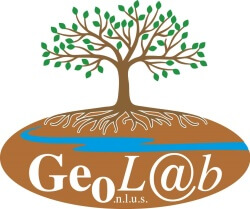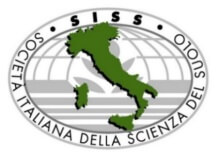Estimation of snow load and avalanche hazard assessment in Southeastern Afghanistan through remote sensing techniques
DOI:
https://doi.org/10.6092/issn.2281-4485/21879Keywords:
Estimation of snow load, remote sensing applications, impacts of climate change, risk assessment of snow avalanches, GIS-based hazard mapping, Southeastern AfghanistanAbstract
The estimation of snow load is vital for hazard assessment and disaster risk management in Southeastern Afghanistan, a region distinguished by its high-elevation mountainous terrain and a high incidence of snow avalanches. Due to the limited availability of ground-based observations, remote sensing techniques have been widely utilized to analyze snow cover, avalanche frequency, and climatic trends. The Snow Avalanche Frequency Estimation (SAFE) model, which employs Landsat satellite data, to emphasize remote sensing’s role in assessing climatic has successfully mapped zones susceptible to avalanches over a span of 32 years. Recent advancements in multispectral and passive microwave remote sensing technologies have significantly enhanced the evaluation of snow-covered areas and snow water equivalent (SWE), thereby facilitating flood prediction and effective water resource management. Climate change has intensified fluctuations in snowfall patterns, and consequently elevating the risks associated with snow-related hazards. This study explores various methodologies for estimating ground snow load, including empirical models, remote sensing applications, and machine learning approaches. Furthermore, it examines risk assessment frameworks and mapping techniques aimed at improving disaster preparedness. The findings underscore the necessity for region-specific modeling strategies and enhanced data collection methods to tackle the challenges presented by climatic variability. Future research should prioritize the integration of advanced geospatial technologies with in-situ measurements to improve the accuracy of snow hazard predictions in the complex mountainous landscapes of Afghanistan.
References
ACHARYA A., STEINER J.F., WALIZADA K.M., ALI S., ZAKIR Z.H., CAISERMAN A., WATANABE T. (2023) Review article: Snow and ice avalanches in high mountain Asia – scientific, local and indigenous knowledge. Natural Hazards and Earth System Sciences, 23(7):2569–2592. https://doi.org/10.5194/nhess-23-2569-2023
ALIYAR Q. (2024) Investigating the trends of climate change parameters in mountainous areas of Afghanistan. European Journal of Theoretical and Applied Sciences, 2(6), 260–270. https://doi.org/10.59324/ejtas.2024.2(6).21
ALOKO M.N. (2018) Risk assessment process for construction projects in Afghanistan. International Journal of Advanced Engineering Research and Science, 5(8): 211–217. https://doi.org/10.22161/ijaers.5.8.26
ANSARI A., TAYFUR G. (2023) Comparative analysis of estimation of slope-length gradient (LS) factor for entire Afghanistan. Geomatics, Natural Hazards and Risk, 14(1). https://doi.org/10.1080/19475705.2023.2200890
ARIEZ M., ZAZAI K.G., ISMAEL LARAWAI M.I., WANI A.A. (2022) Forest cover change detection in paktia province of Afghanistan using remote sensing and GIS: 1998-2018. Jurnal Belantara, 5(2). https://doi.org/10.29303/jbl.v5i2.887
AZIZI A.H., ASAOKA Y. (2020) Assessment of the Impact of Climate Change on Snow Distribution and River Flows in a Snow-Dominated Mountainous Watershed in the Western Hindukush–Himalaya, Afghanistan. Hydrology, 7(4):74. https://doi.org/10.3390/hydrology7040074
BAIR, E. H., ABREU CALFA, A., RITTGER, K., & DOZIER, J. (2018). Using machine learning for real-time estimates of snow water equivalent in the watersheds of Afghanistan. The Cryosphere, 12(5), 1579–1594. https://doi.org/10.5194/tc-12-1579-2018
CAISERMAN A., SIDLE R.C., GURUNG D.R., JARI-HANI B. (2022a) Snow Avalanche Frequency Estimation (SAFE): 32 years of remote hazard monitoring in Afghani-stan. https://doi.org/10.5194/egusphere-egu22-3749
CAISERMAN A., SIDLE R.C., GURUNG D.R. (2022b) Snow Avalanche Frequency Estimation (SAFE): 32 years of monitoring remote avalanche depositional zones in high mountains of Afghanistan. The Cryosphere, 16(8):3295–3312. https://doi.org/10.5194/tc-16-3295-2022
ÇAKIT E., KARWOWSKI W. (2018) A fuzzy overlay model for mapping adverse event risk in an active war theatre. Journal of Experimental and Theoretical Artificial Intelligence, 1–11.https://doi.org/10.1080/0952813x.2018.1467494
DALY S.F., VUYOVICH C.M., DEEB E.J., NEWMAN S. D., BALDWIN T.B., GAGNON J.J. (2012) Assessment of the snow conditions in the major watersheds of Afghanistan using multispectral and passive microwave remote sensing. Hydrological Processes, 26(17):2631–2642. https://doi.org/10.1002/hyp.9367
DELMONACO G., MARGOTTINI C. (2014) General Environmental Condition of the Bamiyan Valley. In: Margottini, C. (eds) After the Destruction of Giant Buddha Statues in Bamiyan (Afghanistan) in 2001. Natural Science in Archaeology. Springer, Berlin, Heidelberg. https://doi.org/10.1007/978-3-642-30051-6_5
FRIDLEY K.J., ROBERTS K.A., MITCHELL J.B. (1994) Estimating Ground Snow Loads Using Local Climatological Data. Journal of Structural Engineering, 120(12):3567–3576. https://doi.org/10.1061/(asce)0733-445(1994)120:12(3567)
GAFUROV A., BÁRDOSSY A. (2009) Cloud removal methodology from MODIS snow cover product. Hydrology and Earth System Sciences, 13(7): 1361–1373. https://doi.org/10.5194/hess-13-1361-2009
GAJANAYAKE A., ZHANG G., KHAN T., MOHSENI H. (2020) Postdisaster Impact Assessment of Road Infrastructure: State-of-the-Art Review. Natural Hazards Review, 21(1):03119002. https://doi.org/10.1061/(asce)nh.1527-6996.0000343
GAO, C., FEI, C. J., MCCARL, B. A., & LEATHAM, D. J. (2020). Identifying vulnerable households using machine learning. Sustainability, 12(15): 6002. https://doi.org/10.3390/su12156002
GRONINGER, J. W., & LASKO, R. J. (2011) Water for agriculture: challenges and opportunities in a war zone. Water International, 36(6): 693–707. https://doi.org/10.1080/02508060.2011.613220
GUL F., ZARGHANI S.H. (2024) Investigating the Consequences of Climate Change and its Impact on Afghanistan’s Security. Nangarhar University International Journal of Biosciences., 03(ICCC(special)), 498–502. https://doi.org/10.70436/nuijb.v3i02.276
HAACK B., WOLF J., ENGLISH R. (1998) Remote sensing change detection of irrigated agriculture in Afghanistan. Geocarto International, 13(2): 65–75. https://doi.org/10.1080/10106049809354643
HASSANYAR A.S. (1977). Restoration of Arid and Semi-arid Ecosystems in Afghanistan. Environmental Conservation, 4(4): 297–301. https://doi.org/10.1017/s0376892900026266
HASSON S., LUCARINI V., KHAN M.R., PETITTA M., BOLCH T., GIOLI G. (2014) Early 21st century snow cover state over the western river basins of the Indus River system. Hydrology and Earth System Sciences, 18(10): 4077–4100. https://doi.org/10.5194/hess-18-4077-2014
IKRAM Q.D., JAMALZI A.R., HAMIDI A.R., ULLAH I., SHAHAB M. (2023) Flood risk assessment of the population in Afghanistan: A spatial analysis of hazard, exposure, and vulnerability. Natural Hazards Research. https://doi.org/10.1016/j.nhres.2023.09.006
JAVED O., MELNICK M.J., REAVES D.S., TODD J.W., KARVETSKI C.W., LAMBERT J.H. (2009) Decision analysis for an Afghanistan sustainable infrastructure plan (ASIP) with volatile emergent conditions. https://doi.org/10.1109/sieds.2009.5166162
KAKAR S.M., ÖZÇELIK Ö. (2024) Regional Development Policies in Afghanistan and Neighboring Countries: A Comparative Analysis. BİLTÜRK Journal of Economics and Related Studies. https://doi.org/10.47103/bilturk.1552966
KIENBERGER S., SPIEKERMANN R., TIEDE D., ZEILER I., BUSSINK C. (2016) Spatial risk assessment of opium poppy cultivation in Afghanistan: integrating environ-mental and socio-economic drivers. International Journal of Digital Earth, 10(7):719–736. https://doi.org/10.1080/17538947.2016.1250828
KRAVTSOVA V.I. (1990) Snow cover mapping of Afghanistan’s mountains with space imagery. Mapping Sciences and Remote Sensing, 27(4): 295–302. https://doi.org/10.1080/07493878.1990.10641815
KRZYSZTOF F., KARWOWSKI W., WILAMOWSKI M. (2020) Prediction of adverse events in Afghanistan: regression analysis of time series data grouped not by geographic dependencies. ArXiv (Cornell University).
MAHMOODZADA A.B., VARADE D., SHIMADA S. (2020) Estimation of Snow Depth in the Hindu Kush Himalayas of Afghanistan during Peak Winter and Early Melt Season. Remote Sensing, 12(17): 2788. https://doi.org/10.3390/rs12172788
MENON A., LAI C.G., MACCHI G. (2004) Seismic hazard assessment of the historical site of jam in afghanistan and stability analysis of the minaret. Journal of Earthquake Engineering, 8(sup001):251–294. https://doi.org/10.1080/13632460409350527
MO H., ZHANG G., ZHANG Q., HONG H.P., FAN F. (2022) Estimating Ground Snow Load Based on Ground Snow Depth and Climatological Elements for Snow Hazard Assessment in Northeastern China. International Journal of Disaster Risk Science, 13(5): 743–757. https://doi.org/10.1007/s13753-022-00443-0
MOHAMMADI N., SAYEDI S.A., SIRAT S.M., MATI M. (2024) Influence of climate change on plant biodiversity and agriculture: A review from a sub-tropical perspective. Nangarhar University International Journal of Biosciences, 03: (ICCC), 205–208. https://doi.org/10.70436/nuijb.v3i02.202
MUJTABA R., ZAINULLAH H., MUSTAFA M. (2022) Analysis of Air Temperature and Precipitation Trends in Kandahar city, Afghanistan from 1990-2019. Kardan Journal of Engineering and Technology. https://doi.org/10.31841/kjet.2022.24
OLSON S.A., WILLIAMS-SETHER T. (2010) Streamflow characteristics at streamgages in northern Afghanistan and selected locations. Data Series. https://doi.org/10.3133/ds529
PODOLSKIY E.A., NISHIMURA K., ABE O., CHER-NOUS P.A. (2010) Earthquake-induced snow avalanches: I. Historical case studies. Journal of Glaciology, 56(197):431–446. https://doi.org/10.3189/002214310792447815
RANGHIERI F., GAMMELGAARD M., JONGMAN B., ANDREA S., MASHAHID S.S., SIERCKE G.A., SIMPSON A.L. (2017) Disaster risk profile: Afghanistan. 1–20.
REHANA S., REDDY P.K., SAI N., DAUD A.R., SABOORY S., KHAKSARI S. TOMER S.K., SOWJANYA U. (2021) Observed spatio-temporal trends of precipitation and temperature over Afghanistan. Water Science and Technology Library, 377–392. https://doi.org/10.1007/978-3-030-64202-0_33
SAHAAR A.S., JULIEN P.Y., ARABI M., KAMPF S.K. (2013) Erosion mapping and sediment yield of the Kabul River Basin, Afghanistan. Mountainscholar.org. https://mountainscholar.org/items/a93808ec-4dbc-45b7-91d1-a2aa561617fb
SANTOSH N., KHATIWADA K.R., PRADHANANGA S., KRALISCH S., SAMYN D., BROMAND M.T., JAMAL N., MILAD DILDAR, DURRANI F., RASSOULY F., AZIZI F., SALEHI W., ROHULLAH M., KRAUSE P., SUJAN K., CHEVALLIER P. (2021). Future snow projections in a small basin of the Western Himalaya. The Science of the Total Environment, 795: 148587–148587. https://doi.org/10.1016/j.scitotenv.2021.148587
SHOVIC H.F., HAZELTON J.M., ROYLANCE S.M., CHRISTENSON L. (2010) Water resources improvement in Southeast Afghanistan: remote project planning and decision support modeling. Watershed Management, 1049–1064. https://doi.org/10.1061/41143(394)95
SHRODER J. (2005). Remote Sensing and GIS as Counterterrorism Tools in the Afghanistan War: Reality, Plus the Results of Media Hyperbole. The Professional Geographer, 57(4):592–597. https://doi.org/10.1111/j.1467-9272.2005.502.x
TANI W.B. (2013) Textbook analysis in Afghanistan: Comparison of mathematics’ textbooks of grade 7-9.
TANNIRU S., RAMSANKARAN R. (2023) Passive Microwave Remote Sensing of Snow Depth: Techniques, Challenges and Future Directions. Remote Sensing, 15(4): 1052. https://doi.org/10.3390/rs15041052
UHL. V. (2006). Afghanistan: An Overview of Ground Water Resources and Challenges. (2006). Ground Water, 44(5): 626–627. https://doi.org/10.1111/j.1745-6584.2006.00251.x
UNITED NATIONS ECONOMIC AND SOCIAL COUNCIL(2006) Policy issues for the ESCAP region: enhancing regional cooperation in infrastructure development, including that related to disaster management. https://doi.org/10.18356/43c94a04-en
VAIDYA, R. A., SHRESTHA, M. S., NASAB, N., GURUNG, D. R., KOZO, N., PRADHAN, N. S., & WASSON, R. J. (2019) Disaster risk reduction and building resilience in the Hindu Kush Himalaya. The Hindu Kush Himalaya Assessment, 389–419. https://doi.org/10.1007/978-3-319-92288-1_11
VARDON, P. J. (2015). Climatic influence on geotechnical infrastructure: a review. Environmental Geotechnics, 2(3), 166–174. https://doi.org/10.1680/envgeo.13.00055
VINING K.C. (2010). Streamflow characteristics of streams in southeastern Afghanistan. Data Series. https://doi.org/10.3133/ds508
VUYOVICH, CARRIE M., (2010) Assessing the accuracy of passive microwave estimates of snow water equivalent in data-scarce regions for use in water resource applications. Master's Theses and Capstones. https://scholars.unh.edu/thesis/593
WHEELER J., BEAN B., MAGUIRE M. (2021) Creating a Universal Depth-to-Load Conversion Technique for the Conterminous United States Using Random Forests. Journal of Cold Regions Engineering, 36(1). https://doi.org/10.1061/(asce)cr.1943-5495.0000270
ZAHIRZADA A., LAVANGNANANDA K. (2021) Implementing Predictive Model for Low Birth Weight in Afghanistan. 9: 67–72. https://doi.org/10.1109/kst51265.2021.9415792
Downloads
Published
How to Cite
Issue
Section
License
Copyright (c) 2025 Nazir Khan Mohammadi, Mohammad Gul Arabzai, Zikui Wang

This work is licensed under a Creative Commons Attribution 4.0 International License.









